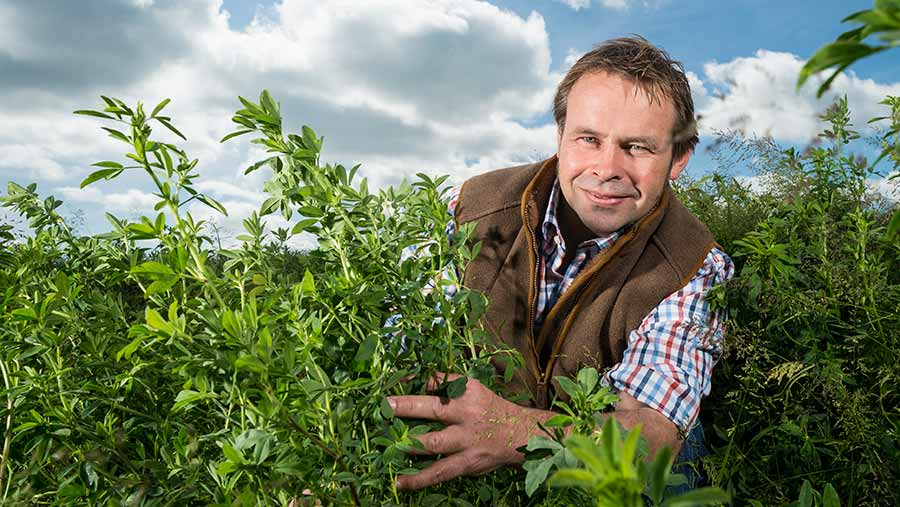Farmer Focus: Looking for the sheep world’s Black Baldy
 © Jim Varney
© Jim Varney We’re busy lambing at the moment, so it’s an appropriate time to talk sheep.
We breed all our own replacements and finish everything. We have a traditional, stratified system with the Swale ewe at the top of the hill and the mule ewe at the bottom.
We are, however, looking for the Black Baldy of the sheep world, a cross-bred sheep with quick growing quality lambs that can “do” on our ground.
See also: Read more from the Livestock Farmer Focus writers
We lamb outside and don’t use any concentrate feed. Lambing fields are shut up from 2 January to rest fields for lambing from 18 April.
After scanning, hill twins go on to deferred grazing, which was shut up when the cows were housed in November. Singles go onto deferred moorland grazing. The rest are fed red clover silage in trailers during January, February and March.
See also: Farmer Focus: It would be folly to leave the EU
This year rested lambing fields had 1,580kg DM/ha on productive leys, which regularly receive farmyard manure or compost. The most productive fields are analysed. Variable-rate rock phosphate, sulphate of potash and calcium lime are applied where needed.
Less productive land, which unfortunately covers the bulk of the farm, had covers of 1,340kg DM/ha or less on poorer areas. Unfortunately, our tenancy agreement doesn’t let us improve these areas.
Twins and triplets go onto better ground while the singles lamb on the permanent pasture.
After lambing, silage field are shut up from 15 May and ewes and lambs are mixed grazed with the suckler cows and calves while being rotationally grazed and moved when the next grazing is ready or they run out of grass.
Both ewes and lambs receive mineral boluses to make up for known deficiencies in the grass. Lambs are sold from August as and when ready.
At no time do we buy in any concentrate and all lambs are finished on grazed grass, brassicas, home grown red clover/high sugar grass silage and home-grown rolled oats.
Simon Bainbridge runs a 650ha organic farm in Northumberland alongside his wife Claire and his parents. With 150 suckler cows and 1,500 breeding ewes, healthy maternal livestock and quality feed are priorities.
